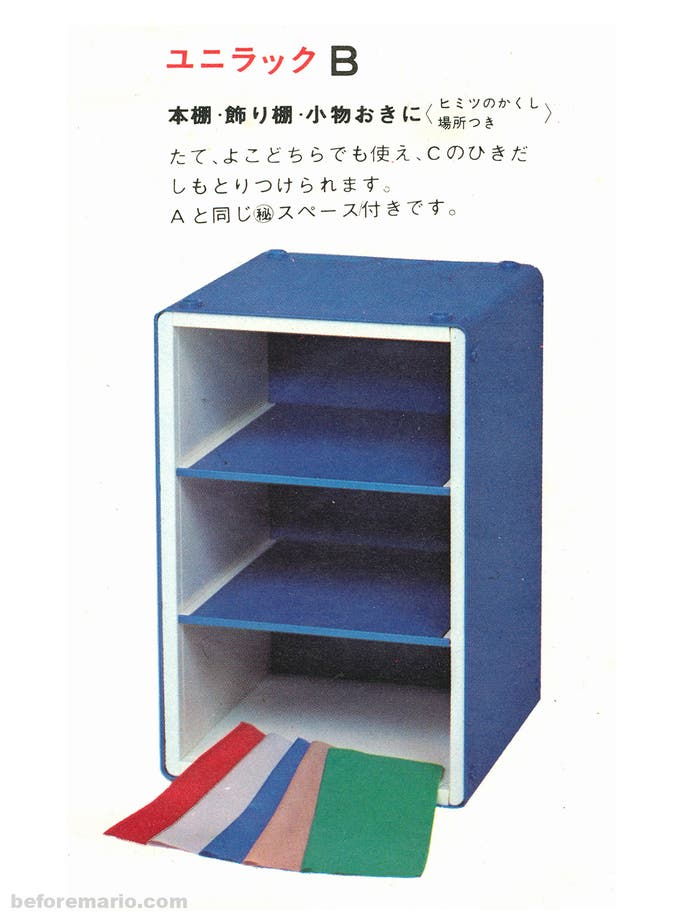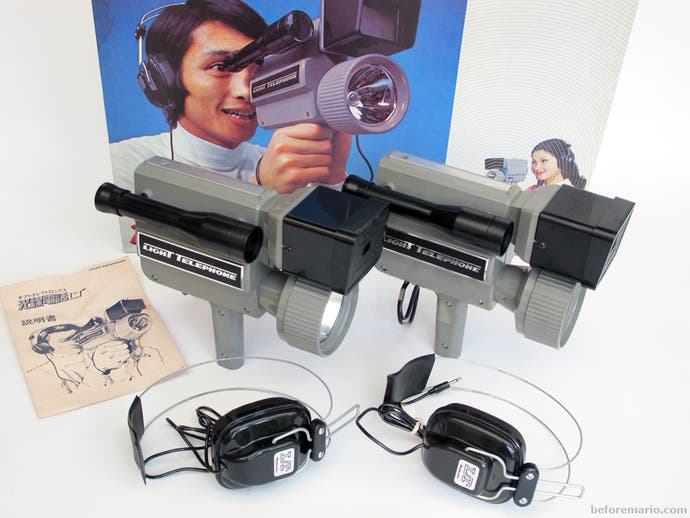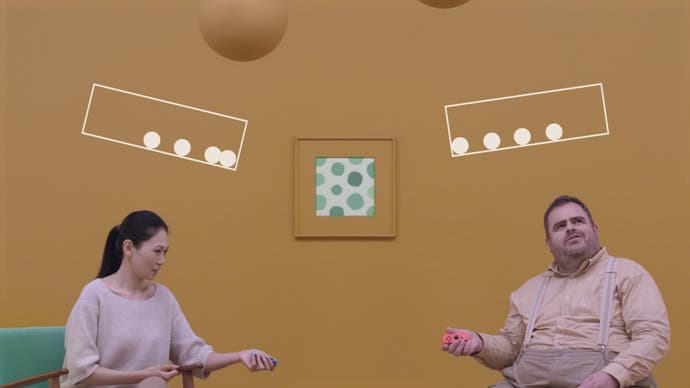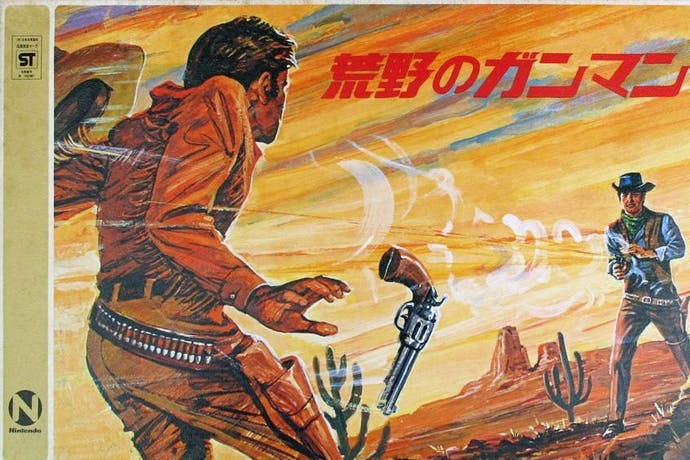To understand 1-2 Switch, look back at Nintendo's crazy pre-history
Switched on.
Over the past few weeks, in between obsessing over whether to go with grey or neon Joy-Cons alongside my Switch pre-order, I've been idly leafing through Nintendo's pre-video game history. Thanks to the incredible efforts of collector Erik Voskuil and his blog Before Mario, it's been a delight looking back at the various offbeat creations as Nintendo moved from the playing card business that had kept it buoyant for the first 75 years of its life into the toy industry. It can be pretty informative, too.

Did you know that Nintendo produced its own storage units for a short time in the early 70s, for example, a kind of precursor to the all-conquering Ikea Kallax unit that you'll spot in the background of every Eurogamer video. What's remarkable about the Unirack is how Nintendo it is, a colourful, playful unit that can be combined with other units for multiple configurations. Oh, and it comes with five multicoloured handkerchiefs that form part of its own in-built magic trick. I don't see Ikea doing that.
You see the same spirit that's stayed with Nintendo ever since in so much of its output of the time. A lot of that can be put down to Gunpei Yokoi, the engineer who joined Nintendo in 1965 and served as a catalyst for the company's new direction. You'll know the Ultra Hand, of course, the extending arm toy that started it all, but were you aware of the Light Telephone, Yokoi's bizarre take on the walkie-talkie that converted sound into light and back again. It's a device as pointless as it is ingenious, the kind of throwaway invention that just seemed to pour out of Nintendo at the time.
Going back to the Switch, it can be enlightening looking at the parallels between Nintendo's new console and some of its curios of the past. There are the obvious references in the Switch's design - the two controllers that come as standard, as with the original Famicom design, or the stand that props up the tablet, throwing back to the small metal pin on the underside of Game & Watch units that allowed them to double up as a clock - as well as some less explicit ones.
You'll see that and more in 1-2 Switch, the weird mini-game compilation that Nintendo's chosen to spearhead its new console. It's an odd ploy, having a game that decides to completely forgo the screen to be front and centre of the launch line-up, but the more I think about 1-2 Switch the more I fall for its eccentricity. It's quite unlike anything Nintendo's ever done before. Well, unlike any video game Nintendo's made before, anyway.

The reveal for 1-2 Switch pointedly opened with a reference to Wild Gunman, and its translation on the Switch seems to be more in tune with the 1972 toy than with the electro-mechanical arcade game or NES shooter that followed. That sense of novelty seems to shine through many more of the mini-games, and I find it all kind of fascinating; in the enforced social awkwardness of Milk, a game which has you pulling an imaginary udder while staring down your opponent, there's something of Yokoi's Love Tester, while other mini games such as Telephone, in which players race to pick up a ringing handset, have more in common with the family games Nintendo created than anything that has graced any of its consoles.
It's oddly exciting. The Legend of Zelda: Breath of the Wild is as close as you can get to a surefire bet come the launch of Nintendo's new console, but 1-2 Switch is something else entirely; a curious throwback to a Nintendo most of us have forgotten, and a pointer towards where the Switch is being positioned. It's a throwback to a more personable type of fun, and a statement that the Switch is a more social flavour of console that places local multiplayer at its heart (Nintendo's stubborn refusal to detail how exactly online will work on day one somewhat scruffily underlines that idea as well).

How incredible, too, that while Sony and Microsoft push for pixels and the rights to the title of most powerful console on the market, Nintendo's going headfirst into its new venture with a game that demands no pixels at all. It's that kind of lateral thinking that's been behind some of the company's biggest hits - and some of its biggest missteps, for sure - but that's what I look for in new Nintendo hardware. The promise of your home console games on the go (one that, Zelda aside, doesn't look like being fulfilled meaningfully for some time given the lack of third-party support at launch) was always a bit dry for me. I wanted some of the crazy - the same nuttiness that tried to do away with traditional controllers with the Wii, that went with glassless 3D with the 3DS and that built a console around a concept as fanciful as asymmetry with the Wii U. With 1-2 Switch it looks like I'm getting all that and more.
Come launch 1-2 Switch could well be either mocked or overlooked, but it may also define the Switch in the same way as some of its more immediate predecessors. Wii Sports famously sparked a small revolution of its own, while Nintendo Land's messy compendium saw the Wii U's somewhat shakier path being laid out. When that game launched alongside the Wii U it was, as Oli astutely pointed out in his review, a reminder of the company's boisterous arcade roots, traces of which you could see throughout the rest of the Wii U's short life. With 1-2 Switch, it feels like Nintendo's harkening to an even earlier time, when its workshops would produce oddity after oddity. Returning to its toymaker roots might rankle with some, but if those toys are half as wondrous as what's come before I simply can't wait.
Images courtesy of Before Mario and republished with kind permission. You can buy Erik Voskuil's brilliant book Before Mario here.




